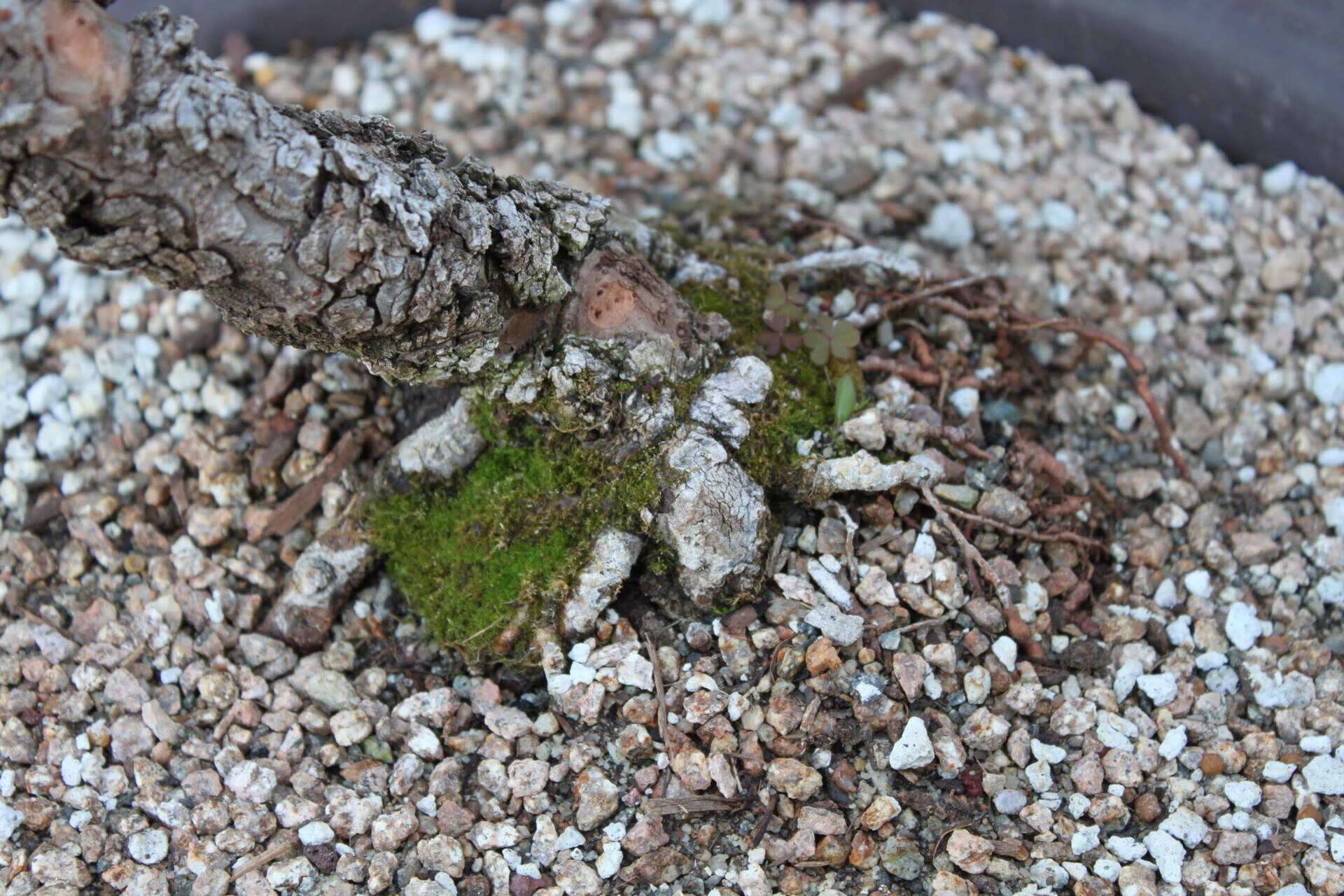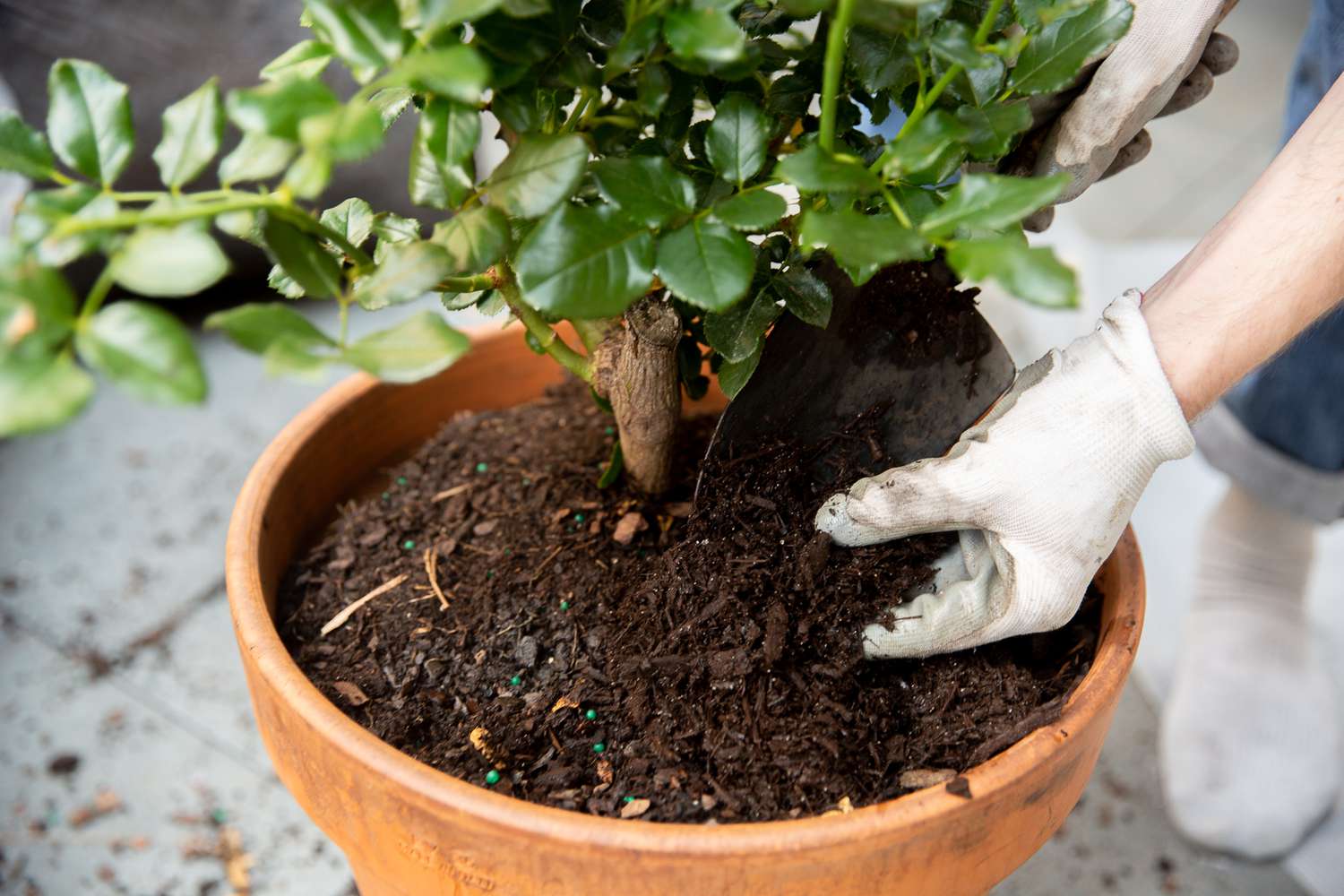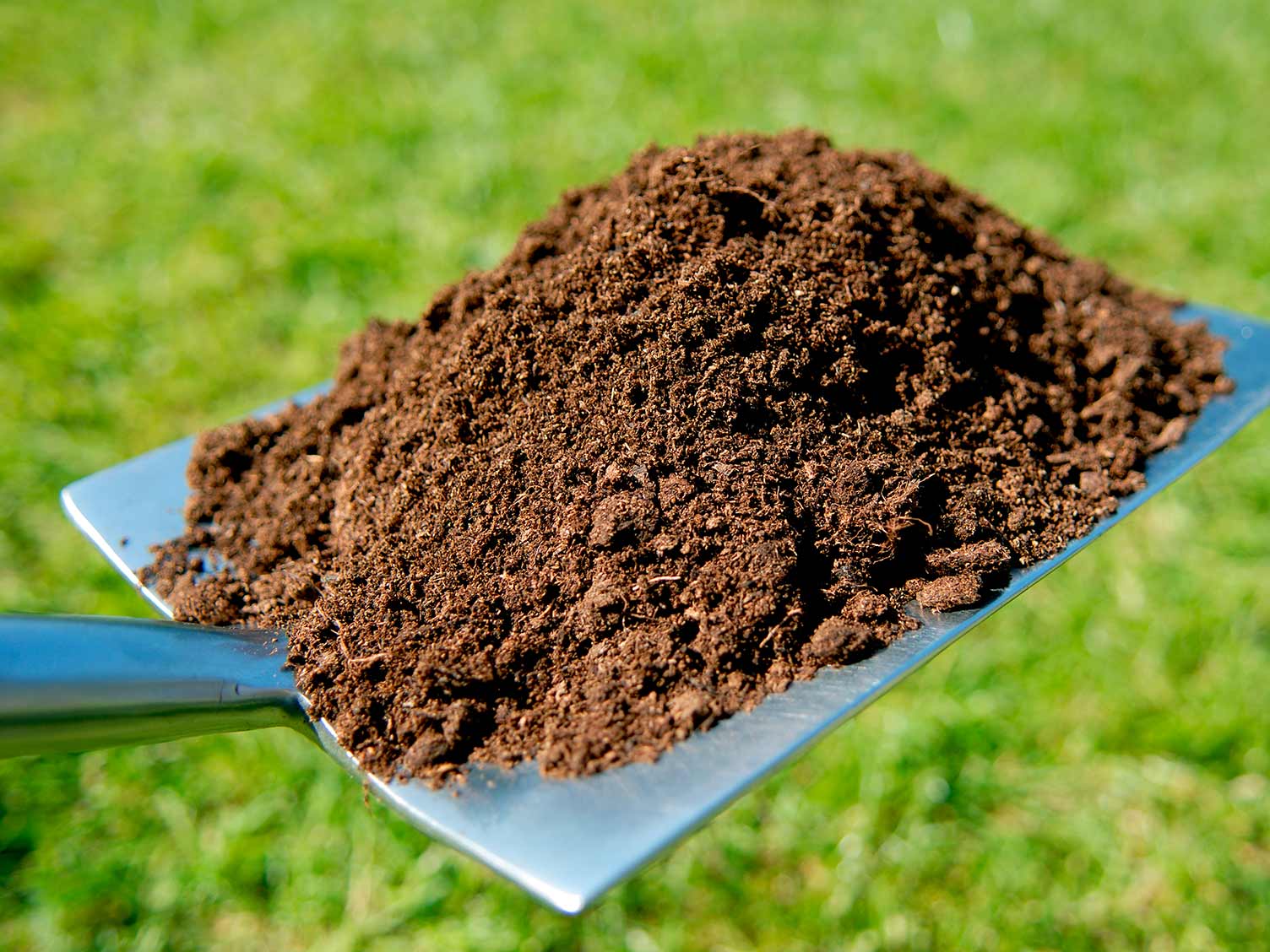Home>Garden Essentials>What Is The Best Bonsai Soil Mix


Garden Essentials
What Is The Best Bonsai Soil Mix
Modified: March 15, 2024
Discover the ideal bonsai soil mix for your garden. Find out the best soil composition and tips for successful bonsai cultivation.
(Many of the links in this article redirect to a specific reviewed product. Your purchase of these products through affiliate links helps to generate commission for Storables.com, at no extra cost. Learn more)
Introduction
Welcome to the world of bonsai gardening, where miniature trees are carefully cultivated and crafted to create stunning natural art. Bonsai, which translates to “tray planting” in Japanese, is a unique and ancient horticultural practice that has captivated gardeners and enthusiasts around the world. One of the key factors that contribute to the success of bonsai cultivation is the choice of soil mix.
The right bonsai soil mix provides the necessary support, aeration, and drainage required for the healthy growth of these delicate trees. It is essential to understand the factors to consider when selecting the best bonsai soil mix, as well as the different types available and the components that make up an ideal mix.
In this article, we will explore the various aspects of bonsai soil mix in detail, helping you make informed decisions for the well-being of your cherished bonsai trees.
Key Takeaways:
- Choose the right bonsai soil mix by considering factors like drainage, aeration, water retention, particle size, and your tree species’ specific needs. Experiment and find the best balance for healthy bonsai growth.
- Popular bonsai soil mixes include akadama, pumice, and lava rock mix, as well as akadama and perlite mix. Customized blends tailored to your tree’s needs can also promote healthy growth and longevity.
Read more: What Is The Best Soil Mix For Tomatoes
Factors to Consider in Bonsai Soil Mix
When choosing a bonsai soil mix, several factors should be taken into consideration to ensure the optimal health and growth of your trees. Here are some key factors to keep in mind:
- Drainage: Bonsai trees require well-draining soil to prevent waterlogged roots, which can lead to root rot and disease. Look for soil mixes that have excellent drainage properties to maintain the right moisture balance.
- Aeration: Adequate oxygen circulation is crucial for the root system of bonsai trees. Choose a soil mix that allows air to reach the roots and promotes healthy respiration.
- Water Retention: While it is important to have good drainage, the soil should also retain enough moisture to keep the tree hydrated. Striking a balance between water retention and drainage is key.
- Particle Size: The size of the particles in the soil mix affects drainage and aeration. Smaller particles tend to retain more water, while larger particles promote better drainage. Consider the specific requirements of your bonsai tree species when choosing the right particle size.
- Tree Species: Different bonsai tree species have unique soil requirements. Some prefer more moisture-retentive soil, while others thrive in well-draining and sandy mixes. Research the specific needs of your tree species to ensure the best soil mix for their growth.
By considering these factors, you will be able to select a bonsai soil mix that caters to the specific needs of your trees, promoting healthy growth and longevity.
Types of Bonsai Soil
There are several types of bonsai soil available in the market, each with its own characteristics and suitability for different bonsai tree species. Here are the most common types:
- Akadama: Akadama is a popular choice among bonsai enthusiasts. This Japanese clay-based soil provides excellent drainage and water retention capabilities. It is known for its ability to break down slowly over time, allowing for gradual release of nutrients. Akadama is commonly used in bonsai soil mixes for a wide range of tree species.
- Pumice: Pumice is a volcanic rock that is lightweight and porous. It provides excellent aeration and drainage properties, making it ideal for trees that require well-draining soil. Pumice is often included in bonsai soil mixes to enhance the overall structure and promote root health.
- Lava Rock: Lava rock is another volcanic material that is commonly used in bonsai soil mixes. It is lightweight, porous, and provides good drainage. Lava rock helps add stability to the soil mix and improve aeration for the roots.
- Organic Materials: Organic materials such as sphagnum moss, compost, and bark can be incorporated into bonsai soil mixes to improve water retention and nutrient content. These materials break down over time, enriching the soil with beneficial organic matter.
- Perlite: Perlite is a lightweight volcanic glass that is often added to bonsai soil mixes to improve drainage and aeration. It helps create air pockets in the soil, preventing compaction and promoting root respiration.
It’s important to note that the ideal bonsai soil mix often consists of multiple components. By combining different types of soil, you can create a mix that strikes the right balance between drainage, aeration, and water retention for your bonsai trees.
When choosing a bonsai soil mix, look for a well-draining mix that includes components like akadama, pumice, and lava rock. This will provide the right balance of water retention and aeration for healthy bonsai growth.
Components of Bonsai Soil
A well-balanced bonsai soil mix is typically composed of several different components that work together to create an optimal environment for the tree’s root system. Here are some common components used in bonsai soil:
- Inorganic Granules: Inorganic granules such as akadama, pumice, and lava rock provide stability, drainage, and aeration to the soil mix. These materials are lightweight, porous, and do not break down easily, ensuring long-lasting support for the roots.
- Organic Materials: Organic materials like sphagnum moss, compost, and bark provide water retention, nutrient content, and improve the overall structure of the soil mix. These materials break down over time, enriching the soil with organic matter and supporting root development.
- Perlite: Perlite is a volcanic glass that is added to the soil mix to enhance drainage, prevent compaction, and create air pockets. Its lightweight and porous nature allows for improved aeration of the roots.
- Coir: Coir, derived from coconut husks, is a sustainable and organic material that helps improve water retention and provides aeration to the roots. It enhances the overall moisture-retaining capacity of the soil mix.
- Sand: Sand is sometimes added to bonsai soil mixes to improve drainage. However, it should be used sparingly, as excessive amounts of sand can cause the soil to become too loose and hinder water retention.
The specific combination of these components in a bonsai soil mix will vary depending on the tree species, climate conditions, and personal preferences. It’s important to experiment and find the right balance that works best for your bonsai trees.
Remember, the goal of a bonsai soil mix is to provide a well-draining, well-aerated, and nutrient-rich environment for the roots to thrive. Understanding the different components and their roles will guide you in creating the perfect soil mix for your bonsai trees.
Best Bonsai Soil Mix Recommendations
Choosing the best bonsai soil mix depends on various factors such as tree species, climate, and personal preferences. However, there are some tried-and-tested soil mix recommendations that have proven to be effective for a wide range of bonsai trees. Here are a few options:
- Akadama, Pumice, and Lava Rock Mix: This mix consists of 70% akadama, 20% pumice, and 10% lava rock. It provides excellent drainage, aeration, and moisture retention. This mix is suitable for most bonsai tree species and is widely used by bonsai enthusiasts.
- Akadama and Perlite Mix: A blend of 70% akadama and 30% perlite is another popular choice. The akadama provides good water retention, while the perlite ensures proper drainage and aeration. This mix is suitable for trees that require a well-balanced moisture level.
- Kanuma: Kanuma, a Japanese volcanic soil, is an excellent choice for acid-loving bonsai species such as azaleas and camellias. It has a high water-holding capacity, good drainage, and provides a slightly acidic environment that these trees thrive in.
- Pine Bark Mix: A mix of pine bark, pumice, and perlite is suitable for pine bonsai trees. This mix replicates the natural growing conditions of pine trees, providing good drainage and aeration while retaining enough moisture for healthy root development.
- Customized Mix: Depending on the specific needs of your bonsai trees, you can create a customized mix by combining different components in varying proportions. Experiment with different ratios of akadama, pumice, lava rock, organic materials, and perlite to find the perfect balance for your trees.
It’s important to note that the best bonsai soil mix may vary depending on your specific tree species and growing conditions. Regular monitoring of the soil moisture level is also crucial to ensure the health of your bonsai trees.
Remember, the goal is to create a well-draining yet moisture-retentive soil mix that promotes healthy root growth and overall tree vitality. By understanding the characteristics of different soil components and experimenting with various combinations, you can find the best bonsai soil mix that works for your unique gardening needs.
Read more: What Is The Best Soil Mix For Strawberries
Conclusion
Choosing the right bonsai soil mix is crucial for the health and growth of your bonsai trees. The soil mix you select should provide proper drainage, aeration, and water retention to create an optimal environment for the roots.
When considering the factors to consider in bonsai soil mix, it is important to keep in mind the drainage, aeration, water retention, particle size, and specific requirements of your tree species. By understanding these factors, you can make an informed decision about the type of soil mix that will best meet the needs of your bonsai trees.
There are different types of bonsai soil available, each with its own unique characteristics. Akadama, pumice, lava rock, organic materials, perlite, and sand are some commonly used components in bonsai soil mixes. These components work together to create a well-balanced environment for the roots, ensuring proper growth and development of your bonsai trees.
Based on recommendations, some of the best bonsai soil mixes include the akadama, pumice, and lava rock mix, the akadama and perlite mix, and kanuma for acid-loving trees. However, it is important to note that the best soil mix for your bonsai trees may be a customized blend tailored to their specific needs.
In conclusion, selecting the best bonsai soil mix requires careful consideration of various factors and the specific requirements of your trees. Experimentation, observation, and adjusting the mix based on the needs of your bonsai trees will ensure their healthy growth and longevity.
With the right soil mix, your bonsai trees will thrive and continue to bring beauty and tranquility to your home or garden for years to come.
Frequently Asked Questions about What Is The Best Bonsai Soil Mix
Was this page helpful?
At Storables.com, we guarantee accurate and reliable information. Our content, validated by Expert Board Contributors, is crafted following stringent Editorial Policies. We're committed to providing you with well-researched, expert-backed insights for all your informational needs.















0 thoughts on “What Is The Best Bonsai Soil Mix”